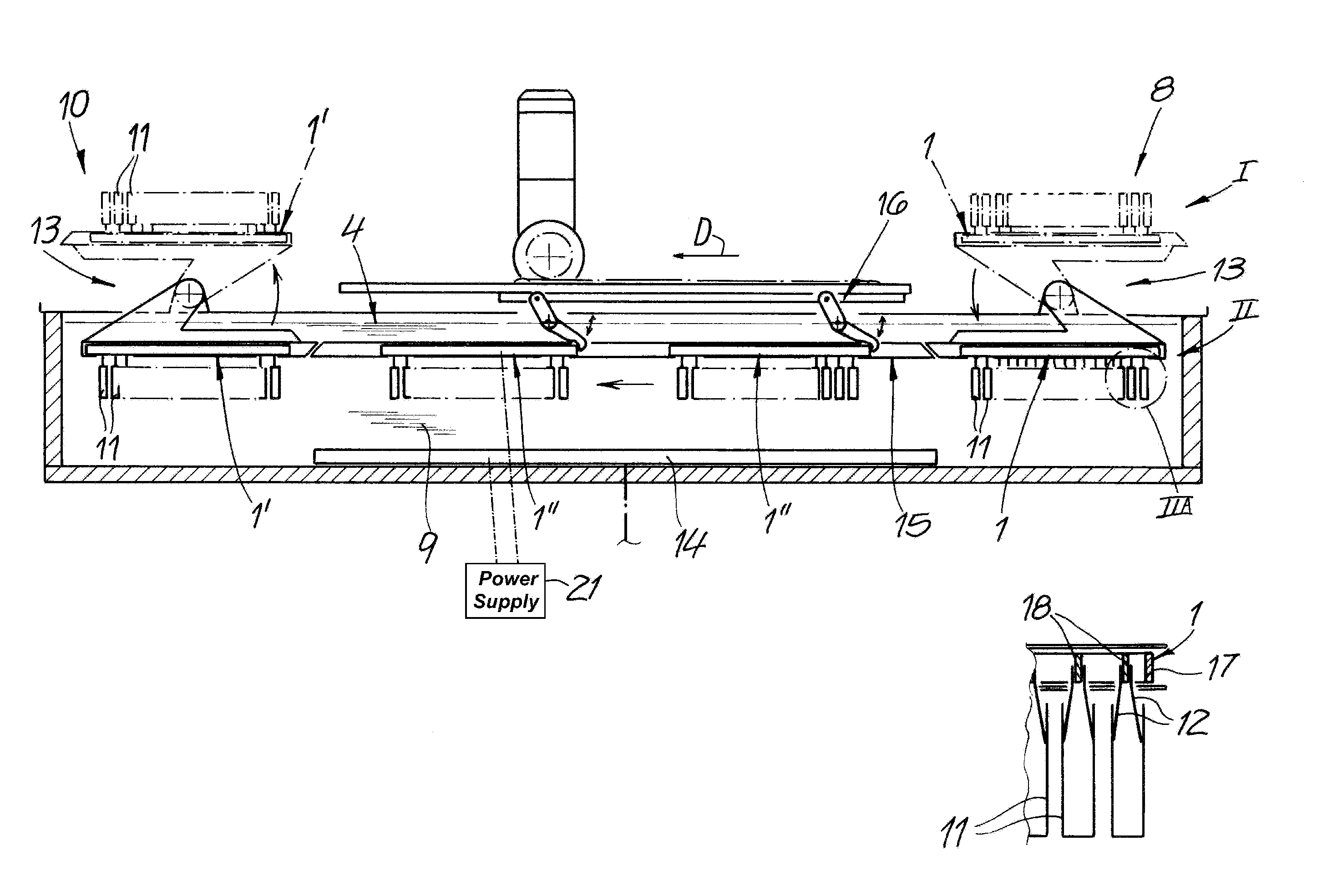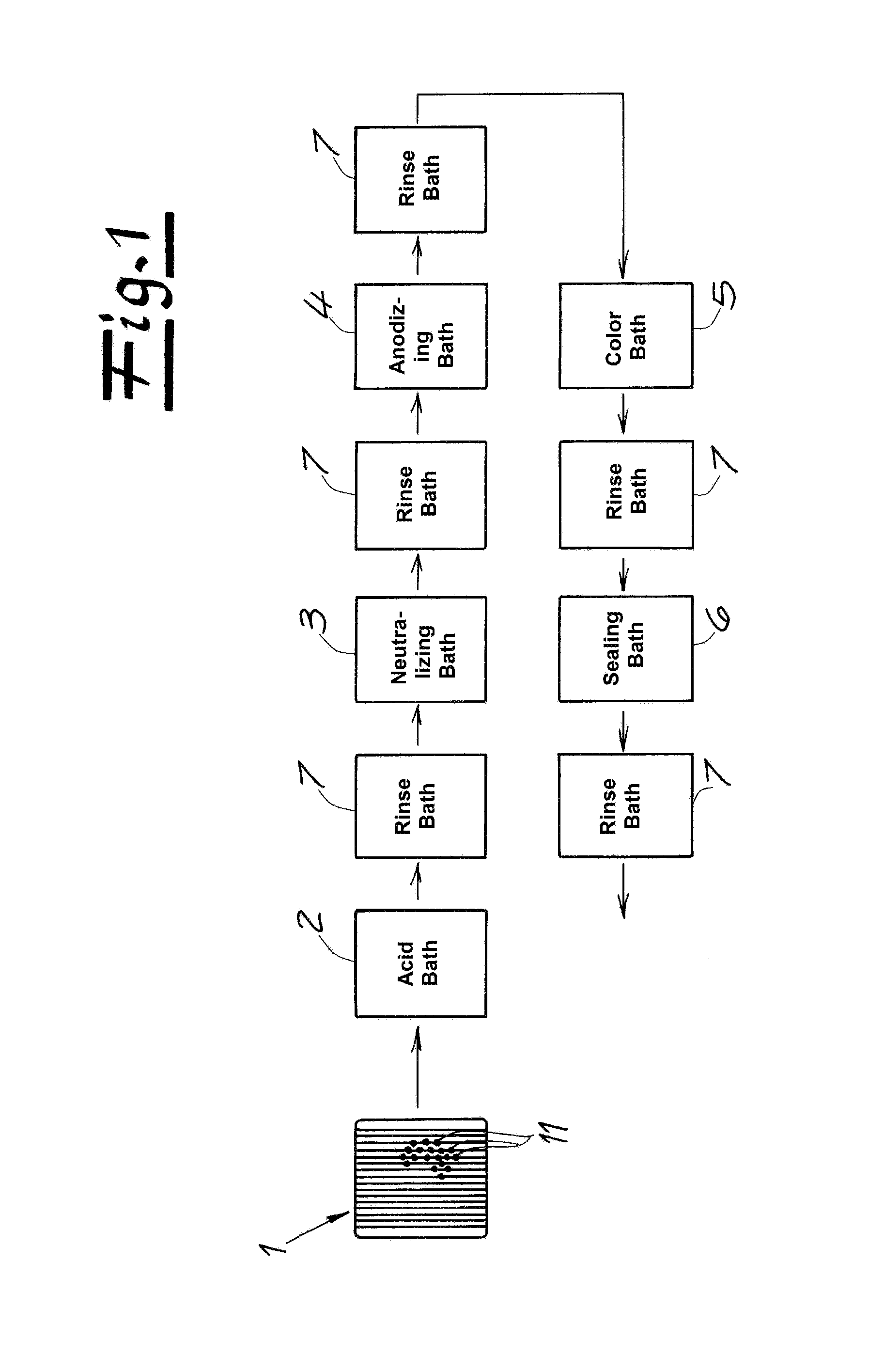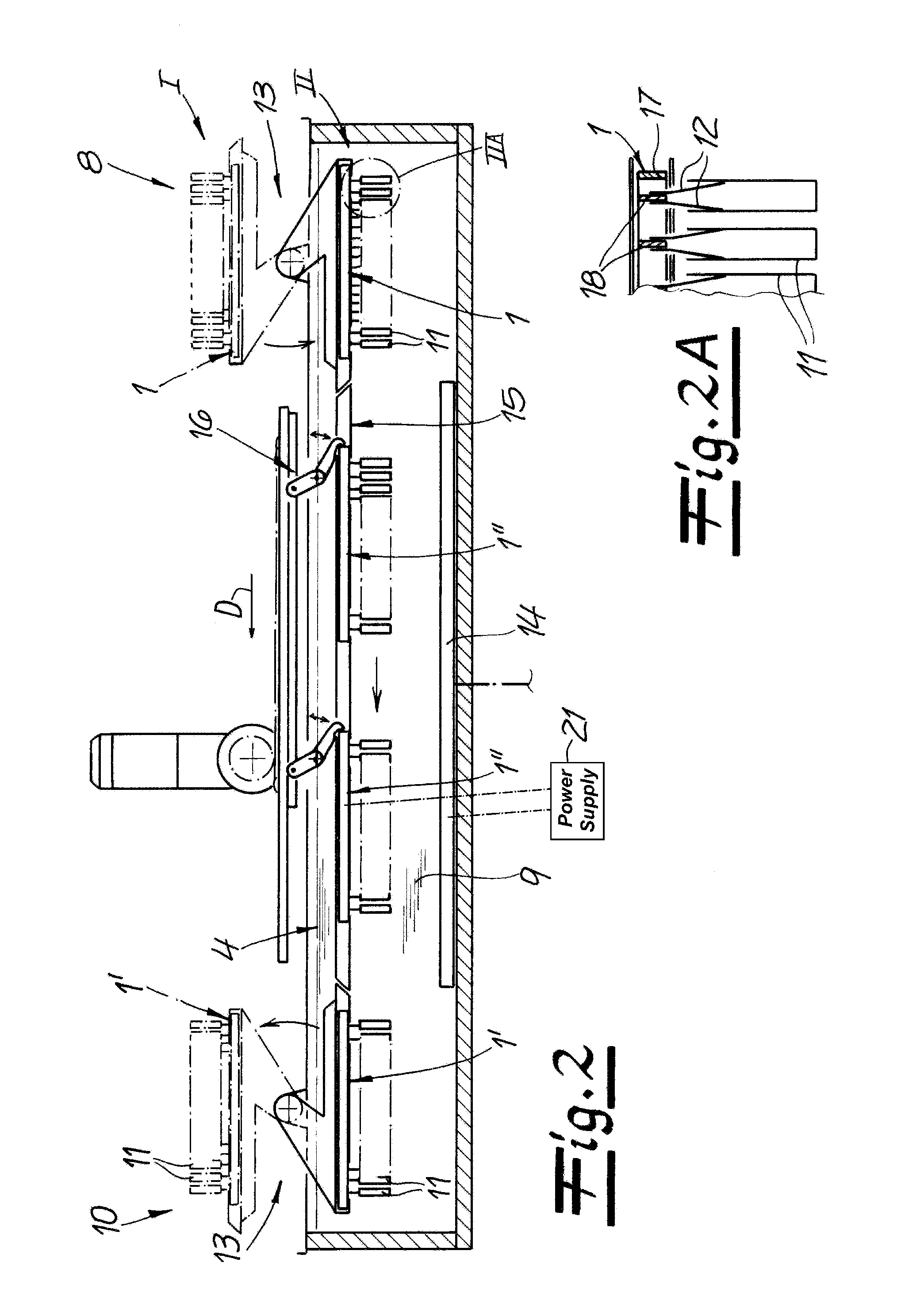Method of anodizing hollow metallic bodies
- Summary
- Abstract
- Description
- Claims
- Application Information
AI Technical Summary
Benefits of technology
Problems solved by technology
Method used
Image
Examples
Embodiment Construction
[0031]As seen in FIG. 1 hollow cup-shaped workpieces 11 (FIGS. 2-4) are secured on projecting fingers of electrically conductive workpiece holders 1, and the workpiece holders 1 are transferred step by step in a predefined work cycle through a series of treatment baths. The treatment baths comprise in particular an acid etching bath 2, a bath 3 for neutralizing the workpieces, an anodizing bath 4, a bath 5 for coloring, and a bath 6 for sealing the treated workpiece surface. Between these treatment baths 2 to 6, the workpieces are rinsed by immersion in rinse baths 7.
[0032]One of the treatment baths, for example, the anodizing bath 4 is schematically shown in FIG. 2. In a transfer station 8 of the treatment bath, the workpiece holders 1 are lowered into the treatment bath and are fed horizontally in a travel direction D in the body 9 of treatment liquid of the bath in one or a plurality of steps predefined by the work cycle to an unloading station 10 of the treatment bath. In a subs...
PUM
| Property | Measurement | Unit |
|---|---|---|
| Time | aaaaa | aaaaa |
Abstract
Description
Claims
Application Information
 Login to View More
Login to View More - R&D
- Intellectual Property
- Life Sciences
- Materials
- Tech Scout
- Unparalleled Data Quality
- Higher Quality Content
- 60% Fewer Hallucinations
Browse by: Latest US Patents, China's latest patents, Technical Efficacy Thesaurus, Application Domain, Technology Topic, Popular Technical Reports.
© 2025 PatSnap. All rights reserved.Legal|Privacy policy|Modern Slavery Act Transparency Statement|Sitemap|About US| Contact US: help@patsnap.com



